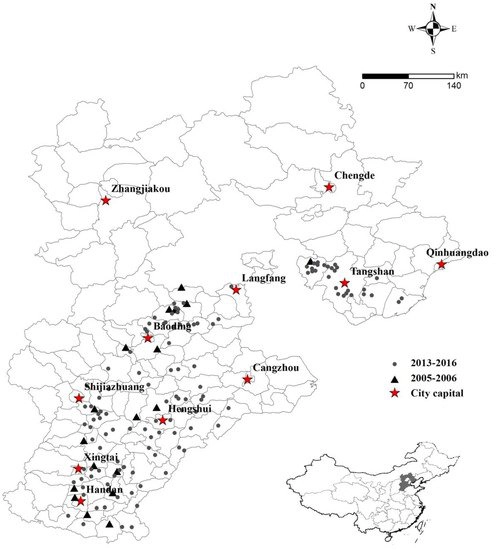Lijing Ji, Qiusheng Li, Yajiao Wang, Lester W Burgess, Mengwei Sun, Keqiang Cao, Lingxiao Kong
To clarify the changes in field populations of Fusarium head blight (FHB) pathogens over a decade, Fusarium species and trichothecene genotypes associated with FHB on wheat were monitored in Hebei province during the periods 2005–2006 and 2013–2016. Fusarium species determination was carried out by morphological identification, species-specific amplification and partial translation elongation factor (TEF-1α) gene sequencing. Trichothecene genotype prediction was carried out by primers 3CON/3NA/3D15A/3D3 or Tri13F/Tri13R, Tri303F/Tri303R and Tri315F/Tri315R. A total of 778 purified Fusarium isolates were recovered from 42 sampling sites in 17 counties during the period 2005–2006 and 1002 Fusarium isolates were recovered from 122 sampling sites in 65 counties during the period 2013–2016. F. graminearum was the predominant pathogen recovered during the periods 2005–2006 and 2013–2016. However, the pathogen composition differed slightly between the two periods. In 2005–2006, 752 out of 778 (96.7%) of the isolates belonged to F. graminearum. Two were identified as F. culmorum. Five other Fusarium species were also recovered, F. equiseti, F. verticillioides, F. proliferatum, F. subglutinans and F. chlamydosporum, with lower recoveries of 0.4%, 0.8%, 0.8%, 0.1% and 1.0%, respectively. Trichothecene genotype prediction showed that all the 752 F. graminearum isolates were of the 15-ADON genotype. Five Fusarium species were recovered from samples collected over the period 2013–2016. F. graminearum was again the predominant pathogen with an isolation frequency of 97.6%. F. pseudograminearum, F. asiaticum, F. culmorum and F. negundis were also isolated at a recovery of 1.4%, 0.7%, 0.2% and 0.1%, respectively. For the 2013–2016 isolates, 971 of the 978 F. graminearum strains were 15-ADON whereas seven isolates were of the 3-ADON type. All seven F. asiaticum isolates were of the NIV type and fourteen F. pseudograminearum isolates were classified as 3-ADON. F. pseudograminearum was first isolated from FHB in Hebei in 2013. Although the recovery of F. pseudograminearum is still low, it represents a small shift in the pathogen composition and trichothecene genotypes associated with FHB in Hebei province. As Fusarium crown rot of wheat caused by F. pseudograminearum is an increasing problem in Hebei province, it is appropriate to monitor the role of F. pseudograminearum in FHB in the future.



